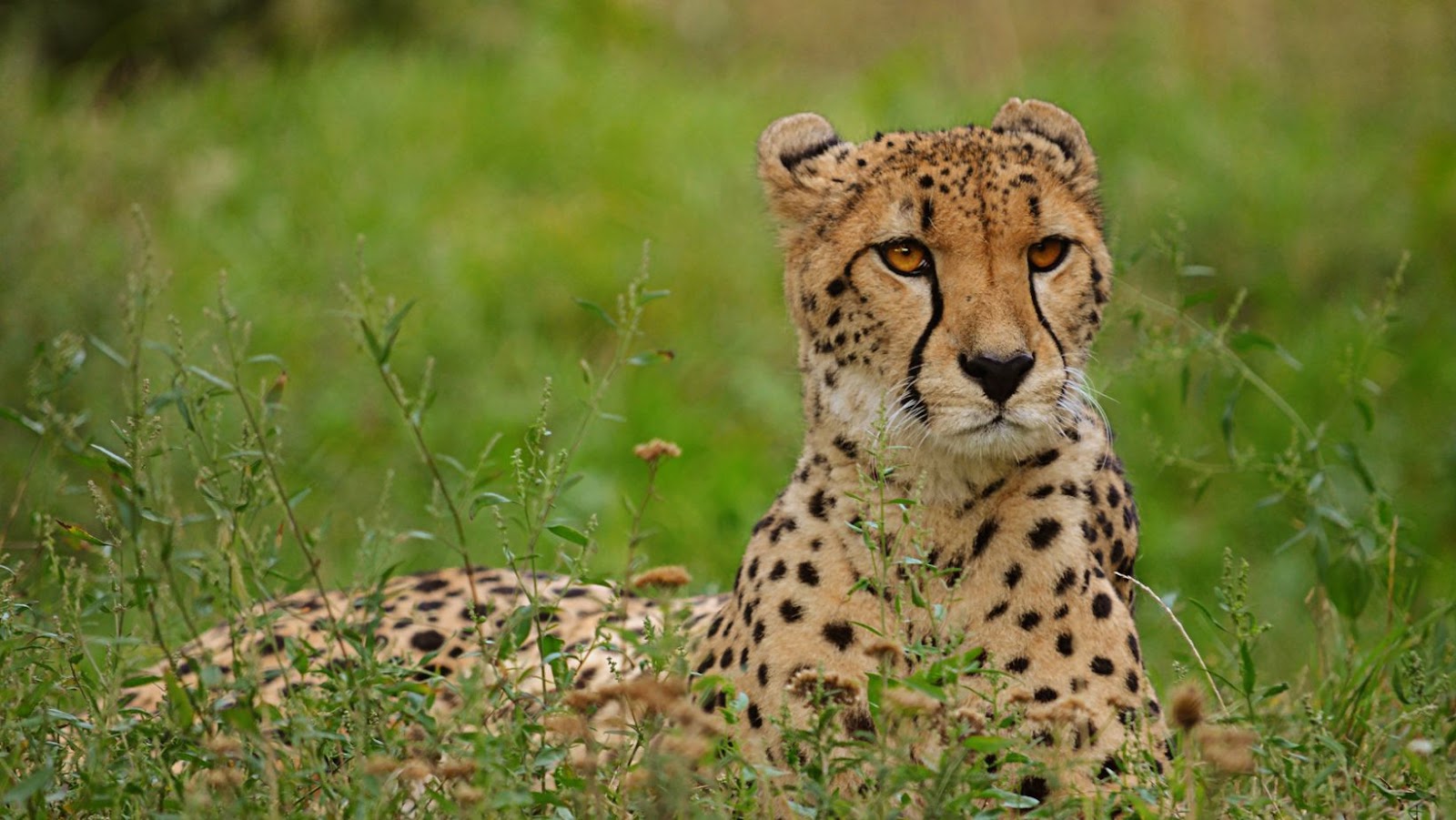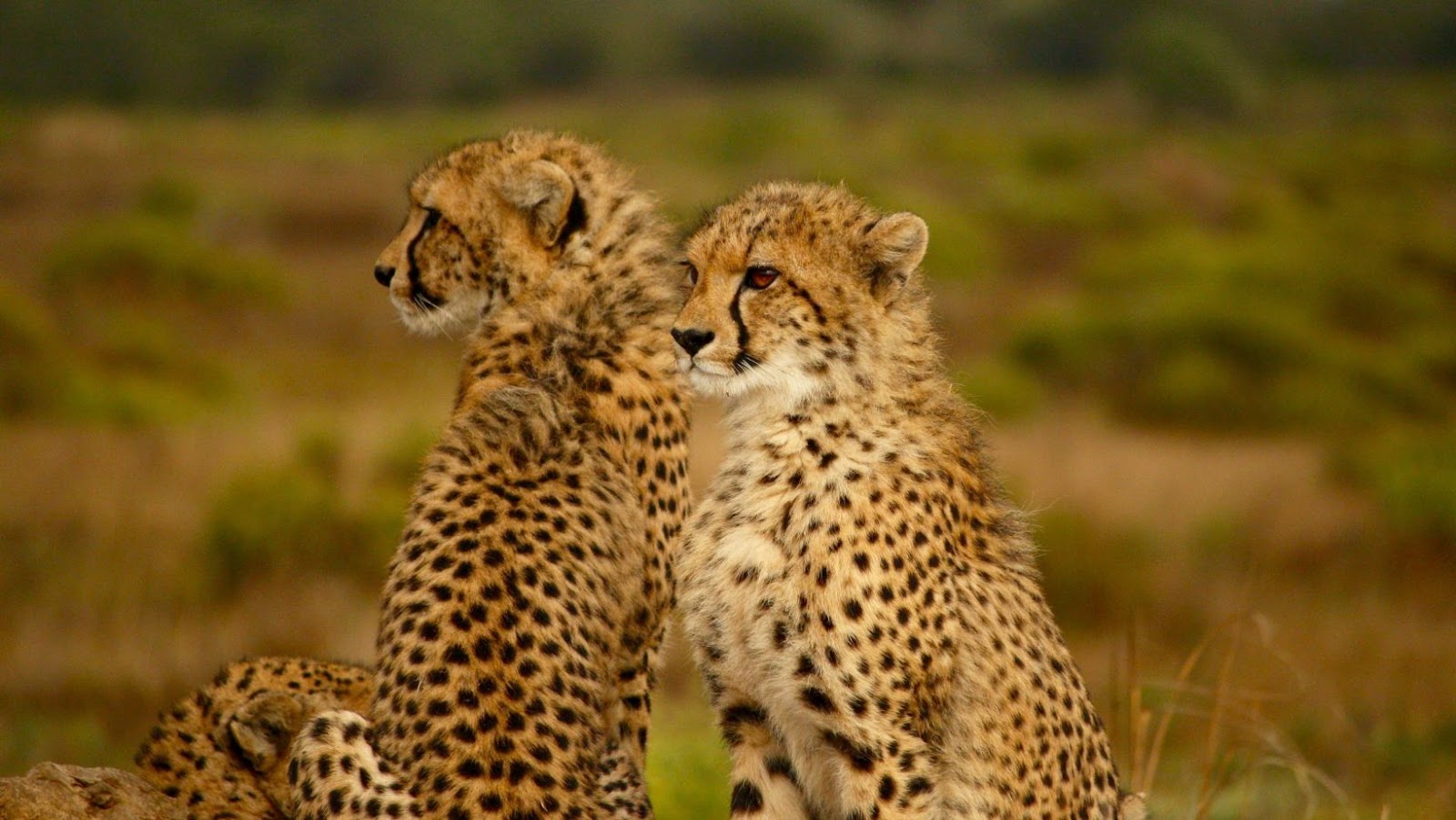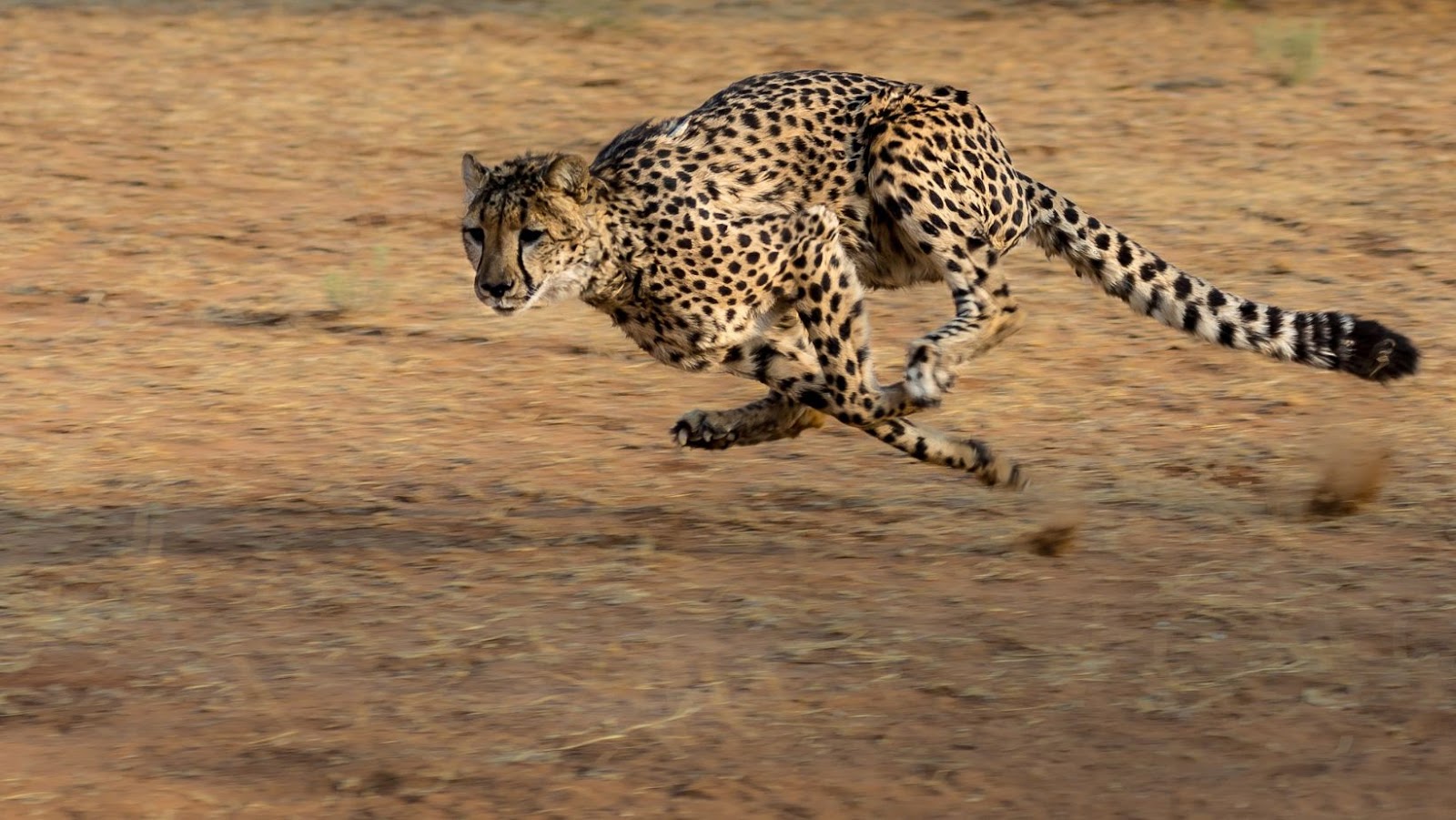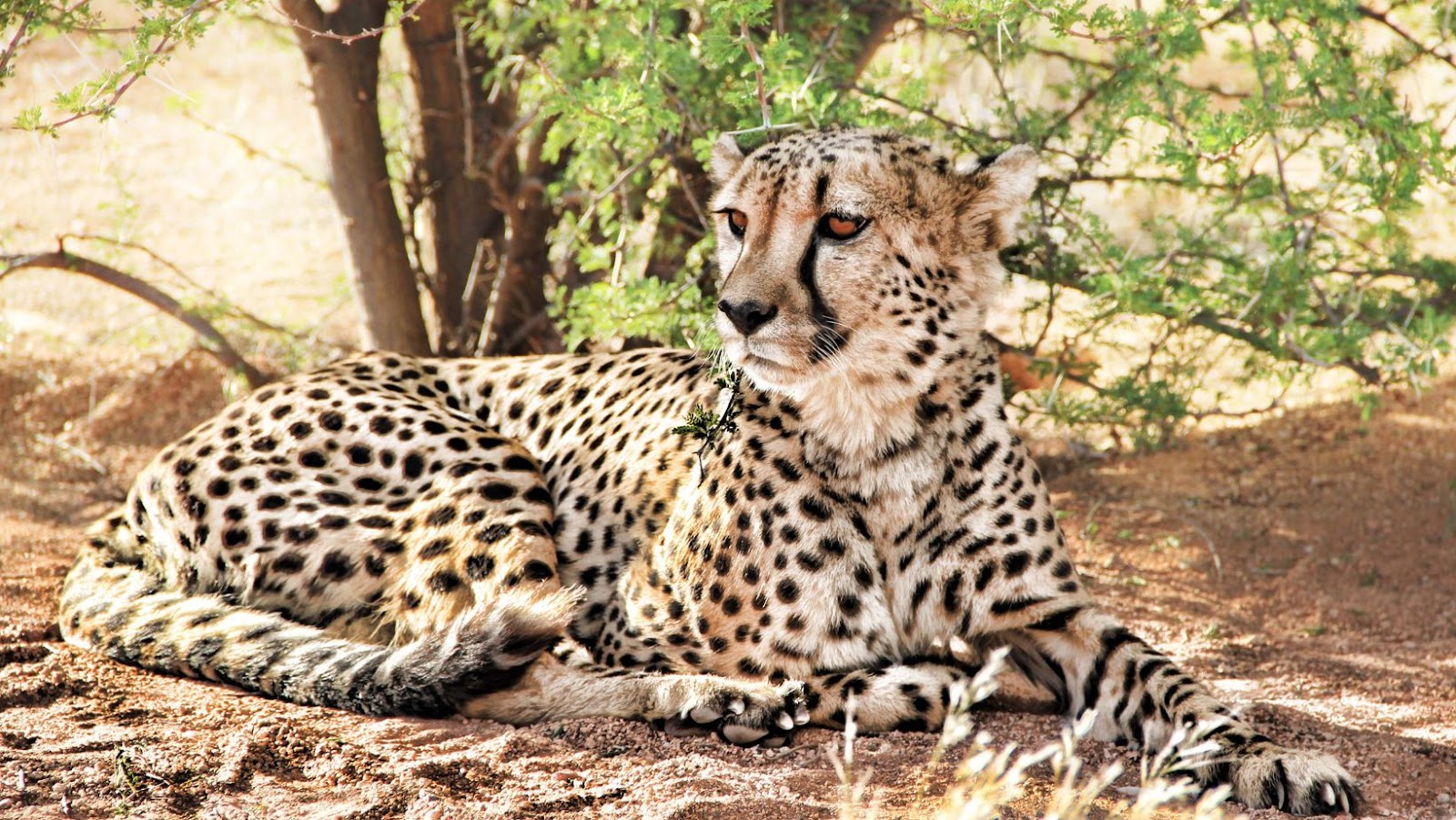 The cheetah population in the wild has been dwindling for several years. Habitat loss, poaching, and conflict with humans are the primary causes for the decline in their numbers.
The cheetah population in the wild has been dwindling for several years. Habitat loss, poaching, and conflict with humans are the primary causes for the decline in their numbers.
According to the International Union for Conservation of Nature, only 7,100 cheetahs remain in the wild. This number is significantly lower than in the 1900s when there were over 100,000 cheetahs.
The rapid decline in their population has placed cheetahs on the endangered species list, making them one of the most vulnerable big cats globally.
Conservation efforts are underway to reverse the decline in cheetah populations. These include habitat restoration, anti-poaching initiatives, reducing human-cheetah conflict, promoting responsible tourism and funding research to better understand the cheetah’s biology and ecology.
However, urgent action is needed to ensure the survival of these magnificent predators in the wild.
Cheetah Population And Habitat
Cheetahs are an iconic species of big cats and are revered for their majestic and graceful beauty. Unfortunately, their population is in decline due to human encroachment on their habitats and poaching.
In this article, we will discuss the current state of the cheetah population, their habitats and the causes of the population decline.
Historical and current cheetah population numbers
The cheetah population in the wild has been declining due to habitat loss, hunting, and other human activities. According to recent research, there are roughly 7,100 cheetahs left in the wild. However, historical data suggests that the cheetah population was once much higher, with estimates ranging from 50,000 to 100,000 in the early 1900s.
Cheetahs are currently found in 22 countries across Africa, but their habitat is shrinking due to expanding human settlements, poaching, and climate change.
Conservation efforts are underway to protect cheetahs and their habitats, including breeding programs, anti-poaching measures, and community outreach programs.
Pro Tip: Supporting conservation organizations and responsible tourism can help protect cheetah populations and their habitats.
Cheetah habitat range and environment
Cheetahs are known for their speed, agility, and beautiful coat patterns, but they are also an endangered species due to habitat loss and hunting. Therefore, the cheetah habitat range and environment are critical factors influencing their survival and population numbers.
Cheetahs are native to Africa and can be found in various habitats, including savannas, grasslands, and scrublands. They prefer open areas for hunting, such as tall grass and shrublands, and require a water source nearby. In the wild, cheetahs face many threats, including habitat loss due to human activity, competition with other predators such as lions and hyenas, and poaching for their skins.
Conservation efforts are underway to protect the cheetah and their habitat through programs such as habitat restoration and anti-poaching measures.
Pro tip: You can help support conservation efforts by donating to reputable cheetah conservation organizations and spreading awareness about their plight to others.
Threats to cheetah habitat – climate change, human activity, poaching
Cheetahs are threatened by various factors such as climate change, human activity, and poaching which have affected the population and habitat of these big cats in the wild.
Climate change has greatly affected the availability of prey for cheetahs because of its impact on the distribution and behavior of animal species. In addition, human activities such as agricultural expansion, urbanization, deforestation, and hunting have led to habitat loss and fragmentation for cheetahs, making it difficult to find enough food, water, and shelter. Poaching is another major threat to cheetahs, as their skin is highly valued and sought after in some parts of the world, and their cubs are often captured and sold as exotic pets.
To protect the dwindling population of cheetahs, it is crucial to safeguard their habitat and ensure they have enough prey to sustain them. In addition, humans must limit their encroachment into cheetah habitats, and governments must implement policies to reduce poaching and illegal trade in cheetahs and their parts.
Pro tip: Many organizations work to protect the cheetah population and their habitat. Consider donating to one of these organizations to support their work.

Cheetah Behavior And Conservation
Cheetahs are among the most iconic animals on the planet, but their population is dwindling due to various factors. A recent study of cheetah behavior and conservation trends has revealed the devastating effects of humans on this beloved animal.
In this article, we will explore how humans have affected the cheetah population and discuss potential solutions for preserving this species for future generations.
Unique physical characteristics and hunting behavior
Cheetahs are known for their unique physical characteristics and hunting behavior, which make them an iconic species in the animal kingdom.
Physical characteristics: Cheetahs have a slender body, long legs, and a flexible spine that allows them to run at speeds up to 70 mph. They also have distinctive black spots on their fur, which help them to camouflage in the savannah environment.
Hunting behavior: Cheetahs are diurnal hunters that rely on their speed and agility to catch prey. They usually hunt alone or in small groups and target animals like gazelles, impalas, and springboks. Unlike other big cats, cheetahs do not have retractable claws, which gives them better grip as they run.
Cheetah populations are dwindling despite their impressive physical abilities and hunting strategies due to habitat loss, poaching, and human-wildlife conflict. Therefore, conservation efforts are crucial to protect this species and preserve the biodiversity of the savannah ecosystem.
Current conservation efforts to protect cheetah populations
Cheetah populations have drastically decreased recently due to habitat loss, poaching, and human-wildlife conflict. However, several current conservation efforts are in place to protect and restore cheetah populations and their habitats.
Cheetah Conservation Fund: This organization works to protect cheetahs from illegal wildlife trade and poaching, and also provides education and resources to local communities on how to peacefully coexist with wildlife.
Cheetah and Wild Dog Conservation Trust: This organization focuses on conserving cheetahs and other carnivores in Zimbabwe through research initiatives, community engagement, and anti-poaching efforts.
Panthera: This organization works to protect wild cats, including cheetahs, by advocating for habitat conservation, conflict reduction, and anti-poaching initiatives.
International Union for Conservation of Nature: This organization has listed cheetahs as a vulnerable species and works towards creating policies and programs to protect the species and their habitats.
Challenges faced by conservationists and wildlife experts in preserving cheetahs
Cheetahs face numerous challenges, and conservationists and wildlife experts must address these issues to preserve this beautiful species.
Few of the challenges faced by conservationists are:
Habitat Loss: Cheetahs’ natural habitats are disappearing due to human expansion like agriculture, livestock grazing, and urbanization- resulting in the cheetah’s displacement.
Hunting and Poaching: Cheetahs face threats from illegal wildlife trading, trophy hunting – this requires active measures to address the available hunting zones.
Decline in Prey Base: As a consequence of overfishing and depletion in wildlife, Cheetahs are forced to seek alternative prey options, leading to increased human-carnivore confrontations.
Lack of Genetic Diversity: Genetic diversity affects the survival of cheetahs in the long term. The cheetah population has low genetic variability leading to the increased chance of inbreeding & genetic anomalies.
These challenges must be addressed to ensure that future generations continue to see cheetahs in the wild.

Rajkotupdates.news:cheetah-magnificent-but-fragile-experts-list-concerns-for-cheetahs
Cheetahs are a magnificent species of cats that inhabit parts of Africa and some parts of Iran. Unfortunately, their population is dwindling due to human-cheetah interaction. This results from poaching, habitat loss, and even fragmentation of their habitats. Human-animal conflict is another factor attributed to the dwindling number of cheetahs.
In this article, we discuss how humans are impacting cheetahs and the possible ways that can be implemented to reduce the negative effects.
Understanding human and cheetah conflict
The population of wild cheetahs is dwindling due to ongoing conflicts with humans, which threaten the survival of this majestic species.
Here are some reasons for human and cheetah conflict:
- Habitat loss due to human activity, such as farming, mining, and urbanization.
- Poaching of cheetahs and their prey animals for commercial gain.
- Retaliatory killing of cheetahs by farmers who view them as a threat to their livestock.
To reduce human and cheetah conflict and save this vulnerable species, conservation efforts must educate local communities about the importance of cheetahs and their role in the ecosystem. Additionally, practices such as sustainable farming and better livestock management can reduce the frequency of attacks on livestock by cheetahs, reducing the need for farmers to retaliate.
Impact of human encroachment on cheetah populations
Human encroachment has a major impact on cheetah populations, leading to a decline in their numbers in the wild. This is largely due to habitat loss and fragmentation, as human settlements and farms continue encroaching upon natural cheetah habitats.
As a result, cheetahs are pushed into smaller and less diverse areas that cannot support their population, leading to inbreeding and other genetic issues. Furthermore, human activities such as hunting, poaching, and retaliatory killings by farmers also contribute to the decline of cheetah populations.
Cheetahs may soon become extinct if we don’t take serious steps to address human-cheetah interaction and protect their habitats. We need to work towards creating protected areas and corridors, managing human settlement and farming practices, and promoting community-based conservation efforts to ensure these magnificent animals can thrive in the wild for generations.
Policy recommendations for protecting wild cheetahs
Specific policy recommendations must be followed to prevent the dwindling population of wild cheetahs. These include addressing habitat loss, hunting, and human-wildlife conflict.
Some of the recommended measures are:
Protection of habitats: Protecting the cheetah’s habitats outside protected areas. This means providing secure corridors between isolated populations.
Prevention of hunting: Banning all forms of hunting, including trophy hunting, can mislead the population’s regulation.
Reducing Human-Wildlife Conflict: Developing policies to encourage communities to modify how they use land, livestock, and crops to reduce the conflict between cheetahs and humans.
Monitoring population: Accurately surveying the cheetah population, defining areas of unique genetic diversity and monitoring population sizes.
Implementing these policies is crucial to protect cheetahs in the wild and prevent their extinction.

Cheetah Poaching And Illegal Trade
Cheetah populations have been declining due to poaching and illegal trade. Cheetahs are considered valuable commodities and are hunted for their fur, body parts, and cubs.
Cheetahs also face habitat destruction and are at risk of becoming extinct. This article will discuss the various threats that cheetahs face and what can be done to protect them.
Overview of poaching activity and the illegal trade of cheetahs
Poaching and illegal trade are serious problems for cheetahs in the wild, leading to a significant decline in their population. Poaching activities usually involve the killing of cheetahs for their fur or as a result of hunting for sport.
Another major concern is the illegal trade of cheetahs as exotic pets or for their body parts used in traditional medicine in some countries. The illegal trade of cheetahs often involves smuggling them across international borders or from one region to another.
Despite the efforts of conservation organizations in implementing protective measures, poaching and illegal trade continue to threaten the survival of cheetahs in the wild.
It is important to raise awareness about the threats cheetahs face and support conservation efforts to protect their populations.
Causes of cheetah poaching and market demand
Cheetah poaching is largely driven by market demand for skins, bones, and other body parts. In addition, as human populations expand and encroach on cheetah habitats, there is increased conflict between people and these big cats.
Here is a breakdown of the main causes of cheetah poaching:
1. Skins – Poachers hunt cheetahs for their beautiful spotted skins, used in the fashion industry to make clothing and accessories.
2. Bones – Cheetah bones are used in traditional medicine to treat various ailments, from joint pain to infertility.
3. Live Trade – Cheetah cubs are sometimes captured and traded as exotic pets within their home range or abroad.
To protect cheetahs from poaching, we must address the root causes of demand for their products and find alternative livelihoods for those involved. This involves working with local communities, raising awareness about the importance of conservation and reducing human-wildlife conflict.
International action to combat the illegal trade of cheetahs
The illegal trade of cheetahs is devastating to this already dwindling population. As a result, the international community is stepping up its efforts to combat this issue and protect these endangered animals.
Here are some of the actions being taken to address the illegal trade of cheetahs:
- The Convention on International Trade in Endangered Species of Wild Flora and Fauna (CITES) has banned the trade of cheetahs and their parts.
- The Cheetah Conservation Fund (CCF) safeguards cheetahs and their habitats through research, education, and community outreach.
- Law enforcement agencies worldwide are cracking down on traffickers who exploit cheetahs for commercial gain.
By working together, we can ensure a future for cheetahs in the wild and prevent them from becoming extinct.























